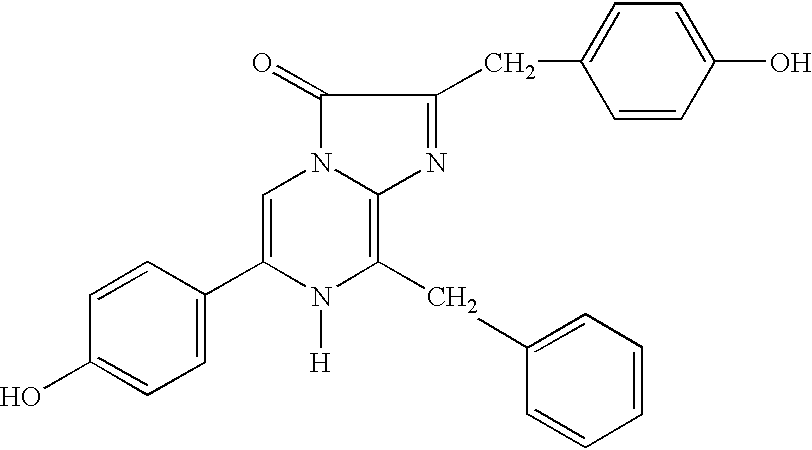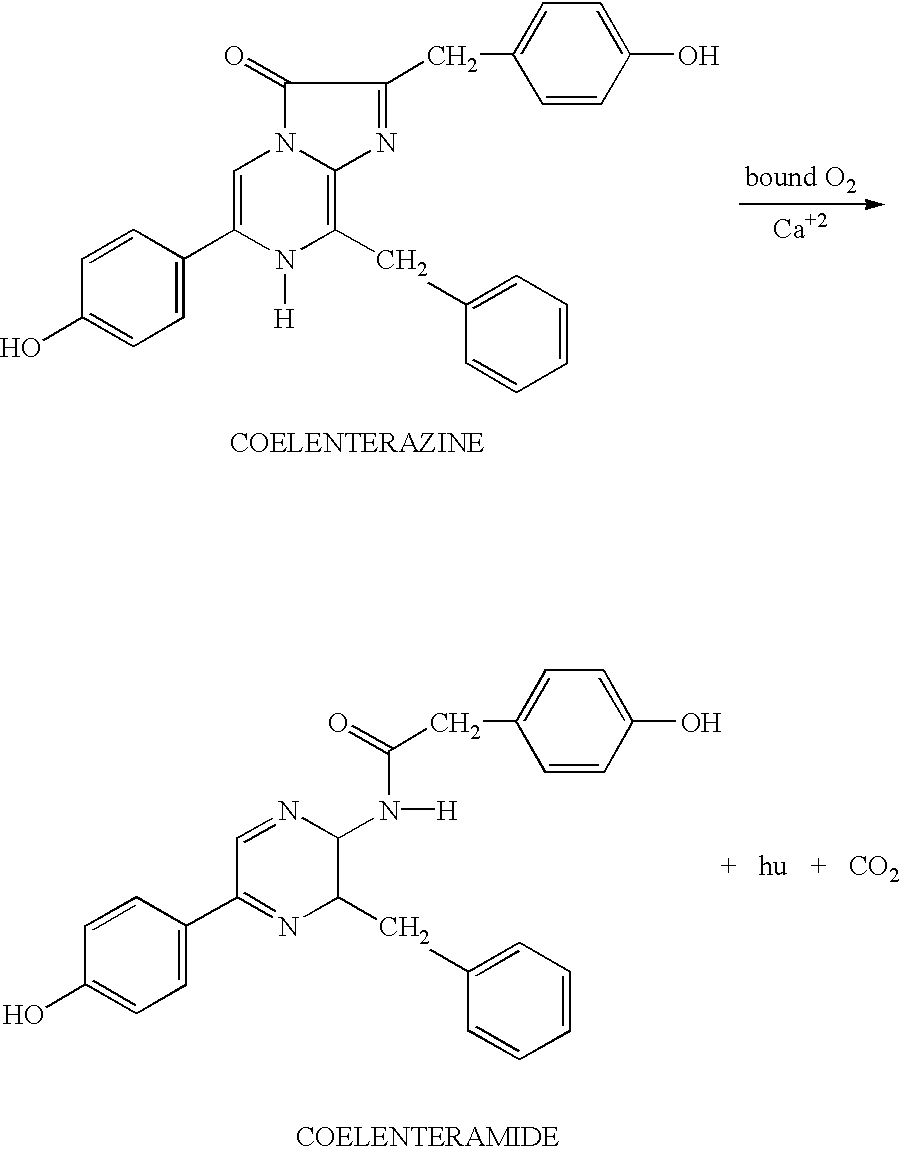Apparatus and method for detecting and identifying infectious agents
a technology of infectious agents and apparatus, applied in the field of apparatus and methods for detecting infectious agents, can solve the problems of mechanical damage to pins, inconvenient or inadequate methods for detecting positive results, and large dies that may increase the cost of devices 100
- Summary
- Abstract
- Description
- Claims
- Application Information
AI Technical Summary
Problems solved by technology
Method used
Image
Examples
Embodiment Construction
A. Definitions
B. Bioluminescence generating systems
1. General description
a. Luciferases
b. Luciferins
c. Activators
d. Reactions
2. Ctenophore and coelenterate systems
a. The aequorin system
(1) Aequorin photoprotein
(2) Luciferin
b. The Renilla system
3. Crustacean, particular Cyrpidina [Vargula], systems
a. Vargula Luciferase
(1) Purification from Cypridina
(2) Preparation by Recombinant Methods
b. Vargula luciferin
c. Reaction
4. Insect bioluminescence generating systems including fireflies, click beetles, and other insect systems
a. Luciferase
b. Luciferin
c. Reaction
5. Bacterial systems
a. Luciferases
b. Luciferins
c. Reactions
6. Other systems
a. Dinoflagellate bioluminescence generating systems
b. Systems from Mmlluscs, such as Latia and Pholas
c. Earthworms and other annelids
d. Glow worms
e. Marine polycheate worm systems
f. South American railway beetle
7. Fluorescent Proteins
a. Green and blue fluorescent proteins
b. Phycobiliproteins
C. Design and Fabrication of Chips
1. Nonself-addressable chips
2. Self...
PUM
| Property | Measurement | Unit |
|---|---|---|
| concentration | aaaaa | aaaaa |
| molecular weight | aaaaa | aaaaa |
| concentrations | aaaaa | aaaaa |
Abstract
Description
Claims
Application Information
 Login to View More
Login to View More - R&D
- Intellectual Property
- Life Sciences
- Materials
- Tech Scout
- Unparalleled Data Quality
- Higher Quality Content
- 60% Fewer Hallucinations
Browse by: Latest US Patents, China's latest patents, Technical Efficacy Thesaurus, Application Domain, Technology Topic, Popular Technical Reports.
© 2025 PatSnap. All rights reserved.Legal|Privacy policy|Modern Slavery Act Transparency Statement|Sitemap|About US| Contact US: help@patsnap.com



